1st
March - 10th March 2012
Up the coast from Melaka to Kuala Lumpur
Melaka
- Pasir Panjung - Port Dickson – Kuala Lumpur
2179.8 – 2500.9km
Sleep-cycling
Once you've tried it a few times, it's not hard to work out why nobody goes camping in Malaysia. Our first night after
leaving Melaka was spent lying in our tent in a small patch of woodland
by the sea, sweating. Not only was it swelteringly hot, but our
extended break in Melaka had turned us soft, and we were jumping at
every snapping stick or rustle in the leaves outside. Sleep evaded both of us until about 5am when we slipped into a fitful doze for about an hour until another woodland noise snapped
us awake again. The embodiment of Snow White's dwarves; short,
grumpy, and sleepy, we rolled up the tent and headed off down the
road to find ourselves a proper bed as quickly as possible.
The coast road from Melaka to Kuala Lumpur was really some of the
best cycling conditions we could have hoped for, so good in fact,
that we had started to grow a little bit bored of it. After so many
days of perfect weather, scant traffic and pretty much zero hills we
were longing for some kind of challenge. Actually, tell a lie, on the
second day's riding all we were longing for was a bed and a good
night's sleep, excitement and incline could wait.
 |
| Melaka - Pasir Panjung - Port Dickson - KL |
Thirty kilometres up the road we found Port Dickson, and some rugged
accommodation in a multistorey block of concrete behind a Chinese
restaurant. Propping ourselves up on a cheeky sugar wallop from
macky-dees, we managed to remain in a state roughly approximating
consciousness until early evening, when we sank into a
deep, black-out sleep that would have been the best feeling ever, had
we been conscious enough to notice.
Our alarm rudely woke us at four
the next morning. We groaned, got up, and began hauling our multitude
of bags down the steps onto the streetlight yellow road outside. Port
Dickson lay just over 100km from Kuala Lumpur, and we were going to
go for it in a single push so an early start was essential.
Unfortunately our eager plans failed to take into consideration that
fact that it didn't get light until just before dawn at 7am, and
Malaysia doesn't do lighting on motorways. So we found ourselves,
bleary eyed and slightly confused, pedalling along an empty, pitch
black motorway for two hours, our world contracted to a circle of
rolling tarmac in our feeble front beams.
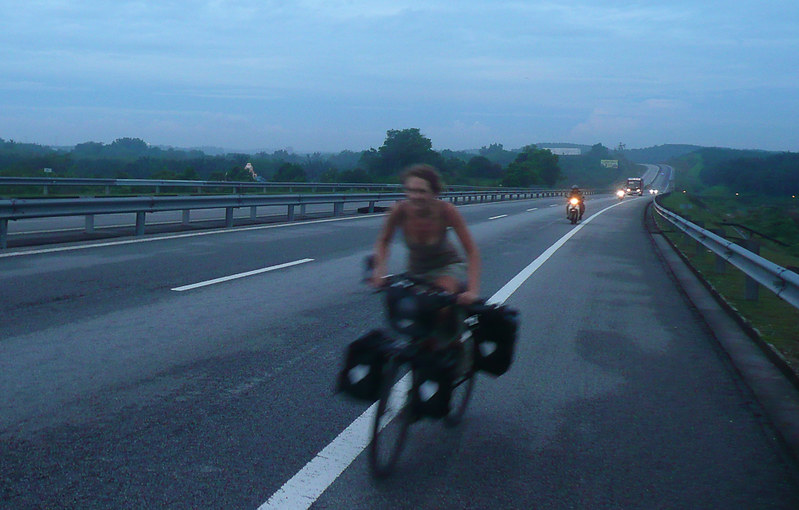 |
| The motorway at dawn |
Dawn was heralded by an owl swooping right in front of Liv, and
within minutes the sky was light and the world appeared once more.
The road got busier once the sun was up, and busier again as we came
nearer to the capital in the early afternoon.
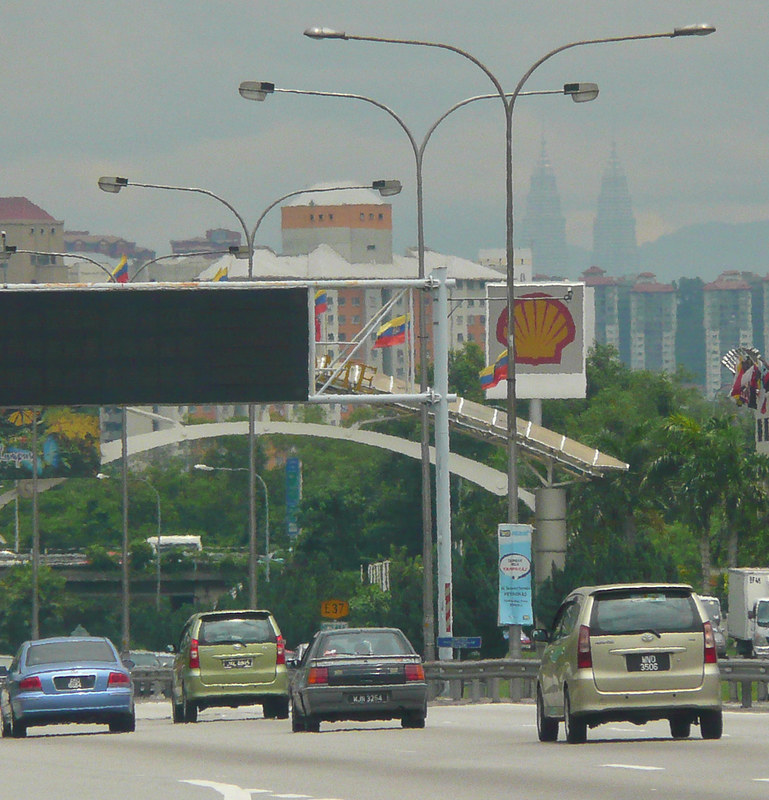 |
| Spot the Petronas Towers |
Since we don't carry a guidebook around with us, we had absolutely
no idea where we might like to stay in the city, so we opted for the
modest goal of just getting into the city centre, and then seeing
what would happen. Despite our unambitious target, we kept taking wrong exits and finding ourselves
pedalling off towards the sea, or back the way we had come, and we were
getting fed up. Thankfully a friendly guy
pulled over and pointed out the way. Once we had penetrated the squirming mass of inner roads we picked our way through endless traffic lights to the obvious focal point of the city; the Petronas Towers.
Kuala Lumpur
The guards at the towers were complete dicks. They wouldn't let us
take a photo with our bikes in front of the towers because,
apparently, we might block the way for other people, despite the fact
that the stairs we were “blocking” were about thirty feet wide,
and there were only about three other people there. Rules were rules
though, and they weren't budging.
Matching the heights of the obstinacy of the guards, the Petronas
twin towers are very lofty indeed. Looking like highly polished
apparatus from Frankenstein's laboratory, they rise up in alternating
bands of light and dark until they terminate 450 metres up with an
early hollywood sci-fi ray-gun finish. They shine like stacks of
silver coins. One feels they might have had a past life in Fritz
Lang's Metropolis, or some other fantastical industrial world in its golden age. From 1998 to 2004 they were the tallest
buildings in the world, just beating the World Trade Centre in
America, and although today half a dozen structures stand taller than
them, they still hold the title of the tallest twin buildings ever.
The guards' unreasonableness ended up paying off for us though,
because it meant we bumped into another cycle tourer who, like us,
had snuck around the side to try and take a photo with his bike. His
name was Hao, and he was quite an extraordinary individual. He was
our age, and had never been outside of China before, but had just
caught a flight to Singapore on his own, and was in the process of
pedalling solo all the way back to China with just a tent and a
couple of panniers. He spoke very little English and no Malay so he
was very much alone most of the time. Riding around with
bags on your bike was as good an introduction as any of us needed
though, and after a lot of waving of hands and nodding we joined
forces to try and make our way to Chinatown to find a place to stay.
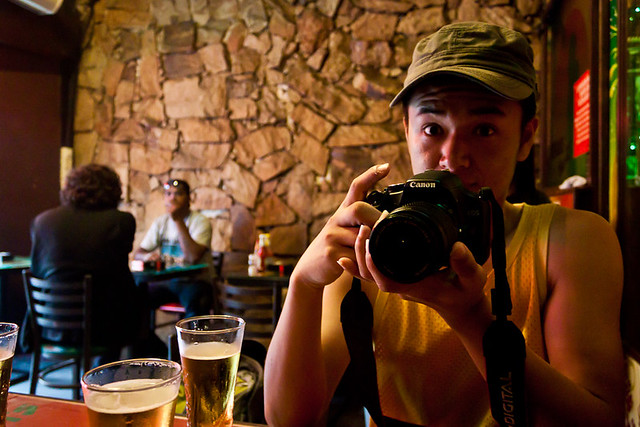 |
| Our comrade on two wheels, Hao. |
Chinatown apparently lay at each of the cardinal compass points from
the towers, or at least everybody we asked pointed us in completely
different directions. After a couple of hours we finally found it,
and then after a bit more roaming around in the afternoon rain we
found a cheap place to stay and hauled our gear up the steps.
 |
| There were no bed bugs at the inn, but the kittens were riddled with fleas. They were adorable, but we kept a safe distance. |
It was a recommendation from Hao's Lonely Planet, and it was a
large scale affair; an old four-storey building converted to
accommodate probably a hundred or more travellers in a mix of dorms
and rooms. Hao took a dorm room, while Liv and I opted for the luxury
of a bit of personal space in one of its cells. No windows, just a
bed with a sagging mattress, a table (no chair), and a fan that
stirred the hot air around. No bed bugs, which was good, but it was
annoying being partially devoured by your bed if you happened to sit
at the wrong corner.
Considering Kuala Lumpur's tender age of 150 we were
surprised at how much character the city had, and we warmed to it in
no time. There were plenty of alleyways to go wandering down,
nondescript eateries serving up succulent chicken, enormous
Islamic inspired train stations, and a whole host of temples to the
various faiths. Right outside our hostel was a
boisterous marketplace that sold knock-off watches and handbags,
along with genuine fruit and chestnuts.
On our first night in town Hao treated us to a meal in one of the
Chinese restaurants by the market. He didn't reckon the food was up
to much, and said there would be much better food for us if we made
it to China. That sounded good to us, because after camping in creepy
woods and cycling a couple of hundred kay the food tasted pretty dam
good to us, and the beer was downright luxurious.
The next evening the treat was on us, so we three headed to the
local reggae bar and made our way through a couple of pizzas and some
more of those lovely beers. Hao brought his phone along this time so
we could use it to translate phrases to each other. It was slow
going, and the translations didn't always make sense, but it meant we
could talk to each other at last. Hao was a great guy, and the three
of us clicked despite the language barrier. We appreciated his
frustration at not being able to communicate, remembering all too
well the glacial conversations we'd had in Java.
After finishing our meal, and feeling a bit tipsy from the
beverages, we ventured off down the road where we came across a large
Hindu temple. A stack of deities and monsters stared down from the
pyramid cap at the entrance, painted in dazzling, ostentatious
colours. The place was packed with people, and nobody seemed to mind
us coming in, so we spent the evening gazing at the vibrant walls of
the compound, snapping pictures and watching heavily decorated young
dancers perform on the central stage. Bright colours, sandlewood
smells, and music all slurred together in our woozy heads to make for
a great evening. It's one of the great joys of travel;
sharing moments like these with people you hardly know from all
over the world. It makes everything seem that bit closer, and more
connected. We retired in good spirits to the roof of our hostel,
downed some exorbitantly priced cans, and watched the city light
horizon, and the hostel's albino hedgehog, before saying farewell and
goodnight.
Hao left early the next morning, but Liv and I had some errands to
run. We needed to arrange our visa for
Thailand, and my handlebar grips had become a flapping mess of worn
rubber, elastic bands and toilet roll that dangled forlornly from the
bike and left my palms sore at the end of each day. A trip to a bike
shop was in order.
We arrived at the Thai embassy to find an assorted queue of
travellers and Buddhist monks winding out of the gates and down the
street, but despite the fact we didn't get to a counter until way
past the deadline for applications the staff were great and still
accepted it. We returned the next day to receive a shiny new visa in
our battered old passports.
Emergency
Despite its age Kuala Lumpur has had its fair old share of action
over the past century and a half, and we bumped right into it one
overcast afternoon as we sat around in our cell, browsing the
internet. I was doing a bit of research when I came across a
photograph of the Japanese invasion of the city during the Second
World War. The photo was taken at a tense moment with soldiers
running down a street, while another crouched down low in the road.
The location though, was remarkably familiar. Liv recognised it at
once as the junction just up the road from our hostel.
Armed with a print out of the photograph we marched up the road.
Despite the passage of time remarkably little had changed, except for
the signs of the shops, and the fact that in the present day there
were no invading armies, although there was a regular
stream of traffic that kept trying to run us over whenever we tried
to line the photo up.
We pinched the idea of lining the old photo up with the present day
from the World Press Photography exhibition in Melaka, so we can't
take credit for the idea, but we think it works very well at bringing
this black and white scene back to life.
 |
| The market outside our hostel |
The whole of South East Asia was inexorably altered by the goings on
of the Second World War, as the trauma of invasion and neglect
nurtured nationalist feelings that paved the way for independence
across many of the countries in the region. You see, leading up to
the Second World War South East Asia, or the East Indies as it was
known then, was marshalled by the colonial powers, principally
Britain, France and Holland. These European rulers used their power
to extract valuable resources like tin, rubber and spices and ship it
back home.
Nationalist feelings bubbled away in some parts during this period,
but on the whole the idea of these colonies ruling themselves was not
really taken seriously. The colonial powers, like Britain, saw
themselves taking on the grudging duty of raising these people out of
their quaint ways and into civilisation – and in return, of course,
it was only right that they should get wealthy off the land's
resources and labour.
The myth of European supremacy was to be blown apart spectacularly
though, when the Japanese army descended into South East Asia, at the
same time as they bombarded Pearl Harbour, on the 7th
December 1941.
The battles in Malaya were bloody ones, but the Japanese pushed the
Allied forces back again and again until the “impregnable”
Singapore, full of refugees, fell to the Japanese forces. Singapore's
surrender by the British was the largest capitulation of British led
forces in history, and it was to be the death knoll of the British
Empire. As Taufiq summarised when we spoke to him about it; “We
thought the British were going to look out for us, but as soon as the
going got tough they left us on our own.” The myth of the colonial
powers' supremacy was over, and now the Japanese were in charge.
The war waged on, many people suffered terribly under the Japanese,
but then the tide of war shifted, nuclear bombs were dropped, and the
war was over. When the British returned to take up their rule once
again the political landscape had changed enormously though. People
had lost the respect they held for these old rulers, and realised
that they were just as prone to mistakes and defeat as everybody
else. All across South East Asia groups formed to fight against the
reinstitution of colonial rule.
Like many of the communist groups that sprang up out of the Second
World War, the Malaysian National Liberation Army began life as an
anti-Japanese militia, their ranks filled mainly by ethnic Chinese
who were persecuted heavily under the Japanese occupation, and who had been
enthused by the news filtering down about the rise of communism in
China. When the British returned, the MNLA began their guerilla
campaign against them, and thus began The Malayan Emergency.
The Emergency lasted from 1948 – 1960, and cost thousands of
lives. It has been termed “Malaysia's Vietnam”, but although it
was fought against a communist guerilla army, the way in which it
played out differed enormously from the better known war in the
north. The communist fighters worked to sabotage important economic
targets, like transport and industry, and had a potentially wide base
of support from the ethnic Chinese community in Malaysia, who were
often poor and were lacking equal rights to vote. The British
response to tackle these fighters was to cut them off from their
support base, by upping and moving whole communities of Chinese into
fenced-in areas. Naturally, many people were distressed about the
move, but once they found themselves in better conditions than they
had been in before, and were told that the land was theirs to keep,
people seem to have been accepting of the situation. By cutting the
communists off from their local supporters, they were driven to more
and more desperate measures, as their popularity waned and their
purpose for fighting became confused.
The British eventually left Malaysia, but long after they
would have, had they not been helping the Malaysian people fight the MNLA. The bitterness felt about this conflict was evident as we
strolled around the Malaysian National Museum, where a whole gallery
detailed the atrocities carried out by this communist army; including
cold blooded executions, sabotage, and the derailing of a packed
passenger train. The Emergency served to sour relations between
Chinese and Malays for generations to come, and set the stage for a
tug-of-war of racial politics that would continue right up to the
present day.
However, the guerilla campaign flickered out, the British did
withdraw, and finally, in 1963, the Malaysian Federation was born.
Freedom was at last in the hands of this new country. And yet I'm
afraid the story doesn't quite end there. The shadow of the past
still hovers over the country today, in the form of racial tensions,
and an enormously controversial set of laws that work to favour
Malays over other races. This is a political quagmire that I
shall leave for the time being, and instead move return to our own story,
as Olivia and I skip merrily out of a bicycle shop in a swanky end of
town with a plastic bag containing new handlebar grips, some oil, and
a puncture repair kit.
So, our Thai visa was sorted, we had most of the parts we needed for
our bikes; not much excuse to laze around now then. It was time to
hit the road again. The night before we left we met up with Michael,
one of the cyclists from Singapore, who lives part-time in Kuala
Lumpur. He had grown up in Chinatown, close to where we were staying,
so he took us out for noodles at one of his old haunts. After a
delicious meal there he took us for a ride to his old school, tucked
away on a little hill. It was an old missionary school, very grand
looking, and the nuns had only recently departed and left it to the
state.
Michael told us, as we drove around the back, how it had been used
as a hospital during both world wars, but how after the Japanese
invasion the field at the back had been used as an execution ground
to decapitate anybody suspected of harbouring resentment towards the occupation. Thanks to the battles raging in China against the Japanese,
the Chinese took the brunt of this fury. When Michael was at school,
workers who were building on the edge of the field unearthed a
collection of skulls belonging to these unfortunate causalities of
occupation.
But since driving around war-graves wasn't the best way to end an
evening, we headed for a faux Irish pub and sunk a beverage or two,
and put the world to rights. When we woke up the next morning,
feeling a little bit groggy, we decided it was only right that we
have just one more day off in the city, and leave the next day. We
didn't want to strain ourselves now did we.
11th - 18th March 2012
West coast to east coast.
Kuala Selengor – Genting Highlands – Bentong – Temerloh –
Kuantan
2500km - 2947km
Fireflies
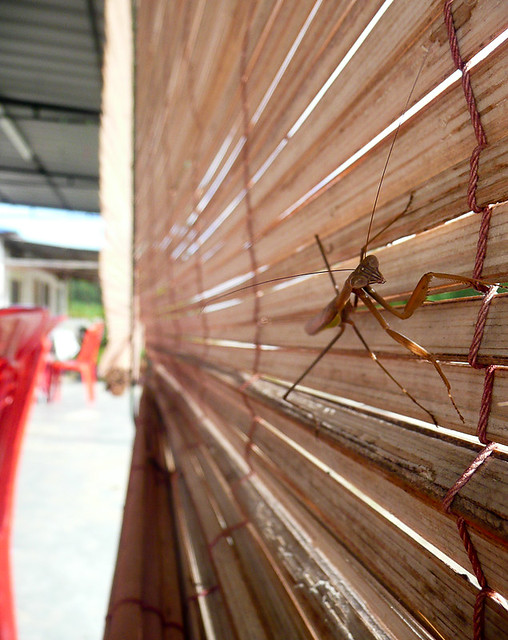 |
| A praying mantis that joined us for breakfast |
The Thai border lay less than 500 kilometres to the north, but we
weren't going that way just yet. In the centre of mainland Malaysia
lies an unbroken stretch of rainforest said to be the oldest jungle in the
world that is a home to all kinds of wonderful exotic species of
animals and plants, from Tigers to Elephants, hornbills to pitcher
plants. There was no way we were going to miss out on that.
So we decided we would take a thousand kilometre detour, since we're
lucky enough to have the time to do so. The plan was to cut east over the hills and ride to the
east coast, then head north for a bit, then cut west again, drop in
to the seldom visited back entrance of the rainforest, then keep carry on back over Malaysia's highlands again and onto the western
highway, just in time for tea.
After so long sat around in Melaka and Kuala Lumpur we were both
very excited to get back into some proper long distance pedalling
again. So we set off... in the opposite direction. There was just one
more thing we wanted to check out before we headed off into the
sunrise; and that was fireflies.
Just west of Kuala Lumpur, close to the coast, lies a little town
built around a river that is famous for its nightly displays of
phosphorescent beetles. We arrived in Kuala Selangor, home of the
famous bugs, after a very pleasant afternoon's cycle. The buildings
were all painted light colours, and although the paint was now
peeling and there weren't many people around, this little
congregation of streets around the estuary of the river had a bonny
atmosphere about it.
After securing a room in a cheap hotel that had the most comfortable
bed in the entire world, we wandered up the hill that looked out over
the town. Although this was the location of a stunning lighthouse,
and the site of the first successful raid against the Portuguese by
the Malays, the undisputed attraction here were the monkeys. Monkeys
on telephone lines, monkeys up trees, black monkeys, brown monkeys,
monkeys with bright orange babies. Even a few monkeys manning the old
cannons along the ramparts. We spent our afternoon strolling with the
monkeys, and then hopped on our unloaded bikes as the sun went down,
and cycled the 10km to the site of the fireflies.
It was a really special evening, another one of those nights that
shan't be forgotten. We were worried that it might rain and scare the
bugs away, or that we might get devoured by mosquitoes out on the
water, but it turned out fine. We bought our tickets, put on our life
jackets, and stepped into our own little wooden boat. The boatman
swept his oar, and we floated down the silent obsidian water. At
first we couldn't see anything, it was very dark, with only the
vaguest traces of shrub against the plum sky behind. But as we came
closer to one of the bushes that hung over the water, we saw it
gently glow, then go dark, then glow again.
The boatman steered us towards it, and soon we could see hundreds of
individual lights go on and off in unison – exactly like fairy
lights at Christmas. Our eyes were now adjusted to the dark, and we
could make out the other bushes further downstream, all throbbing
with the synchronised lights of these insects.
 |
| Despite all our best efforts it was just too dark to get a photo of the fireflies. |
We floated about on the dark river, brushing past bushes teeming
with little lights. Sometimes they fell out of perfect synchrony, and
a few pulses swept across the shrubs like Mexican waves before order
was restored and the rhythmic beating of the lights all came on, and
off, in unison once more.
After half an hour we were taken back to the little dock and we
disembarked, very happy with ourselves, and cycled back down the road
to our super comfy bed.
 |
| The road by the fireflies river early the next morning |
Night of the living Dog
We had no more excuses now, so the next morning we set off east down
quiet roads towards the hills that guarded the central plains.
Despite our eagerness to get off the flats and hit some gradients it
must be said that rural riding in Malaysia is a delight; with long
flat roads meandering through villages and homesteads. There's often
the tangy smoky smell of burning vegetation in the air, that reminds
me of autumn back home. It's nice, although much too often the
landscape gives way to ranks of oil palms, or acres of land stripped
bare ready for planting. I'd say we were always within half an hours
cycling of a plantation. I'll be intrigued to find out what happens
when someone comes up with another way of making cheap cooking oil.
What ever will they do with all those oil palms then?
 |
| Land levelled ready for planting.. |
Since we'd gone so far the wrong way the day before to see the
fireflies, we only managed to make it to the foot of the highlands
that first day, less than 50km north-east of Kuala Lumpur. It wasn't
too late, maybe only 3pm, but we weren't sure if there'd be anywhere
to find food further on, so we pulled into a large roadside
restaurant.
I was adamant that camping round the back of warungs was a tactic
worth pursuing for a number of reasons. First of all, it's free.
Secondly, it means we don't have to cook ourselves. Thirdly, we don't
have to worry about trespassing or camping somewhere we shouldn't.
It's perfect, what could possibly go wrong. So we sat down, ordered a
cup of tea, and plucked up the courage to ask the owners if we could
pitch our tent round the back. They were very nice, and said yes
right away.
We'd noticed the dogs roaming around when we arrived, but we hadn't
really paid them much attention. They didn't look too wild, and dogs
were ubiquitous in Malaysia, so as long as they weren't vicious we
figured we'd be fine camping in their patch. Trouble was, we hadn't
seen the state of the matriarch that waddled around the tables, if we
had done, we might have thought twice about staying there.
We've seen a lot of unfortunate looking mutts in our time, but this
one was something else. She was a short, scraggly thing, slightly bent
out of shape. She was partially covered in lank blonde hair that was so badly afflicted by disease to be
rendered red-raw and bald in many places, most prominently her arse. She walked around exposing a bald,
wrinkled and blemished anus and sagging vagina for all to see, like
some terrible re-enactment of an Edvard Munch. Her face was pocked
with marks from either fights, or fleas, or scratching, and her
swollen nipples hung like bruised acorns from her wrinkled pink
belly. This was a dog you lurched violently out of the way to avoid
being touched by.
“Oh god I feel sick Rob.” Liv said as it sniffed around the
table legs nearby.
 |
We drank our teas with one eye on the whereabouts of this dog, not
wanting it to get anywhere near ourselves or our gear. It looked like
an extra, nay, a leading role from Night of the Living Dogs.
Thankfully it disappeared round the back of the building and out of
view, and I relaxed with my book and tea, then Liv sat up and said
quite calmly and matter of factly: “It's got a nappy.”
The dog had returned to the scene with a large used nappy. The dog
plonked it down with a wet thud right beside our table, before
beginning to lick and chew noisily at the contents. Liv suddenly felt
very ill and had to go for a walk to get away from it. I stayed to
watch our stuff, and with a heavy heart watched as the dog's puppies
- poor silky innocent looking things destined to a rather unhappy
future I fear - began fighting over the sack of poo like hyenas
around a carcass; tugging at both ends, ripping shreds off it, and
spilling foul smelling brown fluid all over the ground.
Our comfy bed in Selangor seemed a long way away now.
The owner's were extremely nice to us though, and showed us where we
could shower, and helped us pick a place to pitch the tent, but we
were unsettled by the dogs, and were worried that they would come
sniffing around us as we slept. As usual with camping in Malaysia
though, the biggest problem turned out to be the heat. Tents trap
body heat like nothing else, and even though we waited until
nightfall before we set it up, it immediately became hot and stuffy
inside. After several hours of tossing and turning we both eventually
fell into shallow sleep.
We woke suddenly at about 4am as one corner of the tent twanged
violently. I shouted out and quickly sat up and opened the tent door
to scare away whatever was attacking us. Just outside the door was
the face-of-meth dog looking in at us – not the most pleasant sight
first thing in the morning – it yapped and ran off, its puppies
chasing after it. The tent was fine though, it seemed one of the pups
had just tugged at a guy rope and let go, but we were not likely to
get back to sleep again, and decided it was best that we just get
moving as soon as possible.
Highland
We packed up our things, rolled the tent away, slung everything on
the bikes and pushed off up the road. It was still pitch dark, and we
made our way down the dark road lit only by our little front beams
and the steady flashes of our rear lights. Lorries thundered past us,
illuminating the road ahead as they passed. We hit the foot of the
hill around 6am. Despite not having eaten breakfast we started up the
road, but both of us felt the lack of energy catch up with us
quickly, so after an hour we pulled over and fired up the stove and
made ourselves a cup of coffee and some noodles.
 |
| The Genting Highlands; our first hill in a while. |
Dusk and dawn are notoriously rapid close to the equator, owing to
the speed at which the central belt of the earth rickers round in
relation to the rest of the planet. First light came as we were
serving up the food, and within minutes it was morning. You can
literally see the light seep into the world around you from about
7.15 – 7.30. The top of the hills we were cycling into looked very
high up, but thankfully the sunlight was padded by grey clouds to
keep the temperature down. We packed up, and leaned into the incline
for a tough morning's cycle.
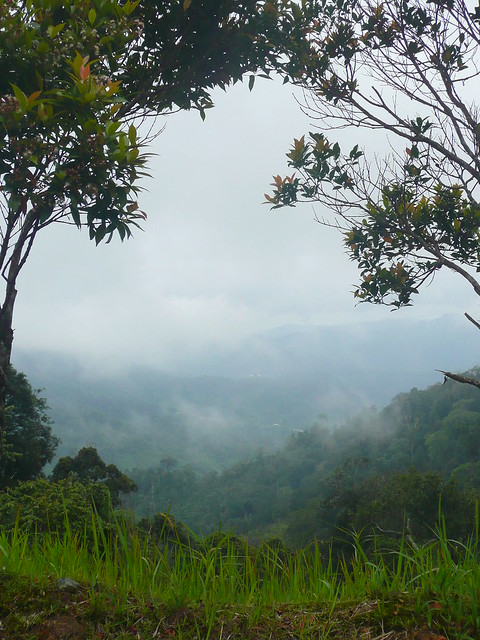 The Genting Highlands, as they are known, are a popular tourist
attraction in Malaysia since they are the location for, funnily
enough, a casino complex. You wouldn't have guessed it riding up the
quiet country road, bounded by woodland. We reached the base of the
cable car station at around midday. Cycling uphill works up a
monsterous appetite, and we headed straight for the little run of
restaurants behind.
The Genting Highlands, as they are known, are a popular tourist
attraction in Malaysia since they are the location for, funnily
enough, a casino complex. You wouldn't have guessed it riding up the
quiet country road, bounded by woodland. We reached the base of the
cable car station at around midday. Cycling uphill works up a
monsterous appetite, and we headed straight for the little run of
restaurants behind.
After pigging out on Indian food and cold drinks we rode up and down
the rolling top end of the hills, and then settled in to a whole
afternoon roaring down the highway that descended in a pleasing sweep
into the flatland below. It had been a long time since we had tackled
a hill – a very long time; Malaysia and Singapore had been pretty
much hill-free, so this was the first real uphill challenge since
before the new year.
 |
| A whole afternoon of freewheeling ahead! |
Although it would be misleading to say that pedalling against
gravity is pleasant, it really is quite a buzz once you get into it.
The extra workout gets your endorphins going, rest is heavenly, and
lunch tastes amazing after a hard morning's ride uphill. It's strange
but we look back on uphill days fondly, despite often cursing them at
the time. Of course one cannot forget that once you ride up a hill,
you get to go down the other side too. Perhaps it's wired into us
animals to enjoy a challenge like that, knowing that there will be
some reward at the end of it. Maybe flat, easy, stable courses aren't
appealing over the long term because they lack the excitement, and
that warm glow that endorphins bring to proceedings. We certainly
relished the challenge, and the subsequent thundering descent.
The road we found ourselves hurtling down was a major highway, but
since it had the Malaysian-standard unused motorcycle lane we got to
tear down it without worrying about the traffic. There's nothing
quite like a whole afternoon with the wind roaring in your face,
watching the tens of metres click by like seconds, while you just sit
there and hold on tight. Concerns about falling off, in case you're
wondering, are relegated to much later in the day, once you're off
the bike and safely in bed.
We came off the highway around 3pm, and made our way along a quiet windy road to the town of Bentong. It was a fairly large town by Malaysian standards, with multiple hotels and manufacturing plants. There was a considerable Chinese presence in the form of warungs, markets and little red post-box shrines. We found a great hotel with a huge room for forty ringitt, and since we were both really shattered and had to catch up on the blog, and because we had the time, we took two days off.
Cross country
 Moving through so many of these little known places, as we do, helps
to create a faint, broad impression of the country as a whole. We're
never around long enough to get to know people, the things a
community has to offer, or the problems that it faces. There are
times when, wandering around yet another town – sometimes
forgetting even what the place is called – we feel utterly
disconnected from it all. Like fleeting spirits floating through the
streets one evening, gone by the morning, never to return. The
adhesive bonds of the normal everyday are gone, and we slide through
town after town, city after city, taking with us only the most
superficial of impressions.
Moving through so many of these little known places, as we do, helps
to create a faint, broad impression of the country as a whole. We're
never around long enough to get to know people, the things a
community has to offer, or the problems that it faces. There are
times when, wandering around yet another town – sometimes
forgetting even what the place is called – we feel utterly
disconnected from it all. Like fleeting spirits floating through the
streets one evening, gone by the morning, never to return. The
adhesive bonds of the normal everyday are gone, and we slide through
town after town, city after city, taking with us only the most
superficial of impressions.
Yet there's something liberating about living like this for a time.
There's scope for thought and introspection unhindered by the
banalities of routine. You also become adept at making good first
impressions too; smiling and being nice to people, because these are
often the only impressions you get to make. Conversely, on the rare
occasions when people, usually kids, are rude or unfriendly, you
realise how important simple things like manners and smiles really
are. It's not always easy when you're out of breath and a guy on a
scooter comes past waving at you, but we always try to return the
gesture. The world, condensed into two wheels, is better like that.
So we meandered through the little streets of Bentong under the hot
Malay sun, thinking about this, that, and the other, and then headed
to our two-night home and watched the delightfully mindless Bourne
Identity, before curling up in bed ready for the push across the
flat central belly of Malaysia.
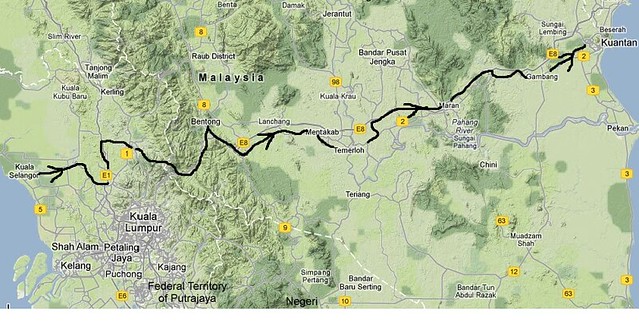 |
| Selangor - Genting Highlands - Bentong - Temerloh - Kuantan |
We set an alarm and were up before the sun, showering and packing
away in the hope of covering some distance before things got too hot.
There were unlikely to be any serious hills over the next few days,
according to Google's topography, but the heat from about midday
through to 4pm was ruthless. We estimated we had a little over 230km
to get to the city of Kuantan on the eastern coast, so three days of
70-80km per day would do the trick.
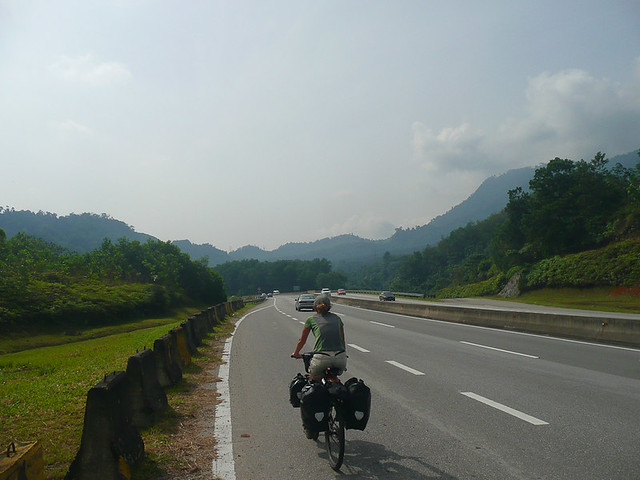 |
| The highway out of Bentong |
The ride across the flat waist of Malaysia was sweet. Hot, but
sweet. The roads remained in good condition, and the whole way across
we had the choice between the high-speed highway, or the meandering
and scenic secondary roads. We cleaved off some kilometres on the
highway first thing, then moved off down the lanes, through tiny
townships, calling in for a long lunch around midday to dodge the
heat and eat rice.
Beds
We always start out with intentions of camping when we don't have a
day off, but when it comes to crunch time the idea of snuggling up in
a cool, fresh hotel bed is usually too much for us, especially when the
alternative is sweating it out in a dog bothered tent.
 |
| Hotels don't have dogs. In fact, many of them have cats. Aw. |
Once we've got it in our head that we're going to stay in a nice
cool bed though, it's hard to shake the idea and it can sometimes
lead us to quite drastic measures in order to secure it. The next day
we set out along the highway again, the tarmac in front and behind
shimmering in the rising heat. We had in mind that we could stay in a
town marked on our map at the junction of two major roads, that sat
about 60km from our city on the coast, Kuantan. That made it the
perfect spot to stay for the night, then head off for a relatively
easy 60km final push the next day.
We arrived in town around 3pm, but it was much smaller than we had
hoped, basically just a line of buildings running along the road.
There was a hotel, but it was just a little bit too pricey for us;
$30 a night. We decided to try the classic bartering ruse of telling
the guy it was too much for our budget and saying we'd try elsewhere,
at which point the fellow usually decides that low-paying guests are
better than no guests at all and offers us a lower price. That didn't
happen though, and since there were no other hotels in town we just
had to keep cycling down the road to the next village; a village that
we had been told we could find accommodation in, although there was
no guarantee it would be any cheaper.
There was no accommodation there, or in the village after that. The
air was cooling off as the sun descended below the trees, which was a
relief, but we were very hungry and tired, and ready to stop for the
day. The next major town was 15km away but it might not have
accommodation either. If we were going to camp though it would be
foolish to set the tent up before the sun went down, or else the tent
really would become an oven, and besides there was nowhere to sit
around and rest while we waited. We had every reason to keep going,
although, let's be honest, the driving force was the possibility of a
lovely, cool, safe bed waiting for us.
The light was leaking out of the day as we freewheeled in to the
town, eyes alert for tell-tale vertical hotel signs. An old man
spotted us and shouted “Wan-tan!” and waved his arm down the
road. We were shattered and just smiled at him, not really knowing or
caring what he was talking about, and we continued our search. We
reached the edge of the town dismayingly quickly, and there was no
sign of a hotel, or guest house, or anything at all. Then it clicked,
the old fella had been saying “Kuantan.” That was the next place
with accommodation.
It was nearly 6 o'clock by this point, so we only had an hour of
light left. Kuantan lay a further 30km away which was a very
unpleasant distance to consider cycling at the end of a long hot day,
but we figured that if we could make Kuantan that evening then we
would have earned ourselves an extra day off, since we would have
made it a day ahead of schedule. Besides, we had soft, cool beds on
our minds, and knackered as we were, the idea of crawling into a hot
tent and being molested by dogs on some patch of wasteland by a road
was not at all enticing. So, after a slap up meal of biscuits and
nuts from the local shop, and despite having already cycled 115km
that day, we set off down the road again.
We arrived in Kuantan an hour after dark, after negotiating a few
pretty hairy junctions in the blinding glare of headlights. It wasn't
very nice but we found a hotel in no time at all. It was a cheap
multi-storey jobby, with the cheapest rooms at the top of four
flights of stairs. The owner was about as relaxed as you get,
slouching topless in his chair, cackling at the TV with his left
testicle dangling out of his boxers. We ascended the staircase with
all our belongings, ran back out again to devour a brilliant meal
from the place next door, and felt very happy with ourselves. Not
only were we a day ahead of schedule, but we had set a new record.
145km in a single day, but by Christ we were going to need that day
off tomorrow.
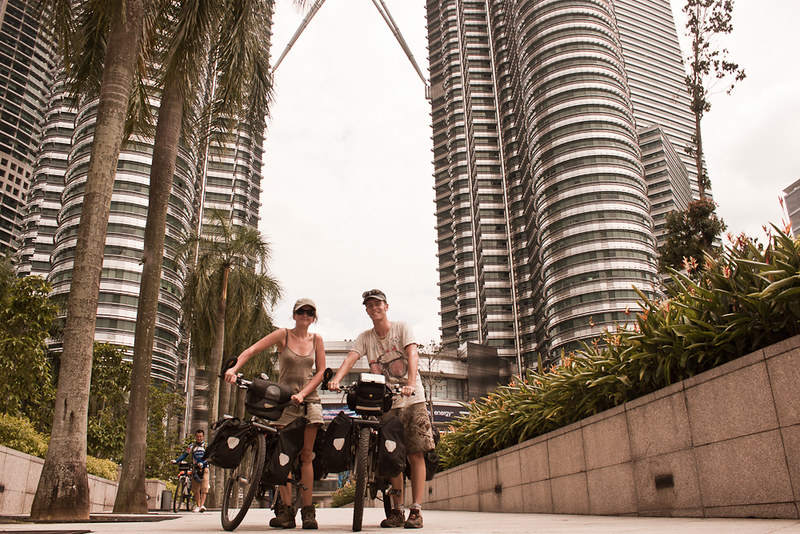
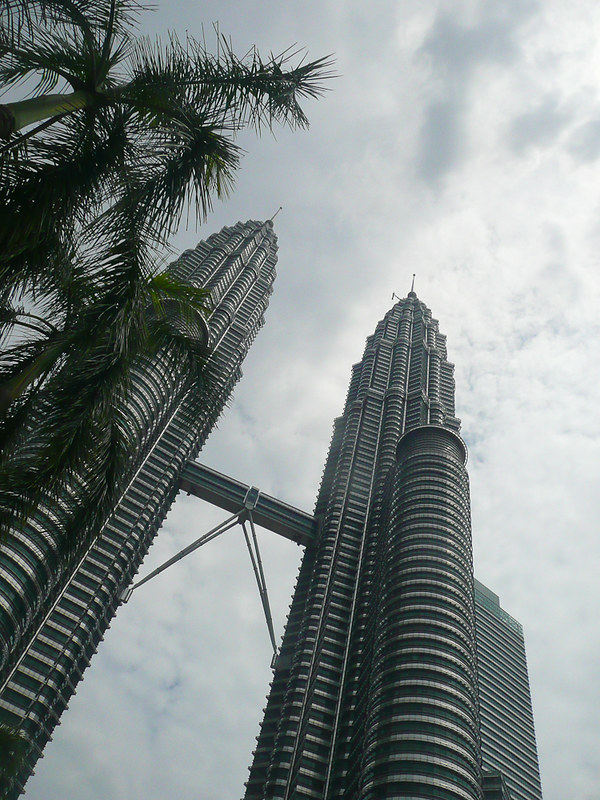

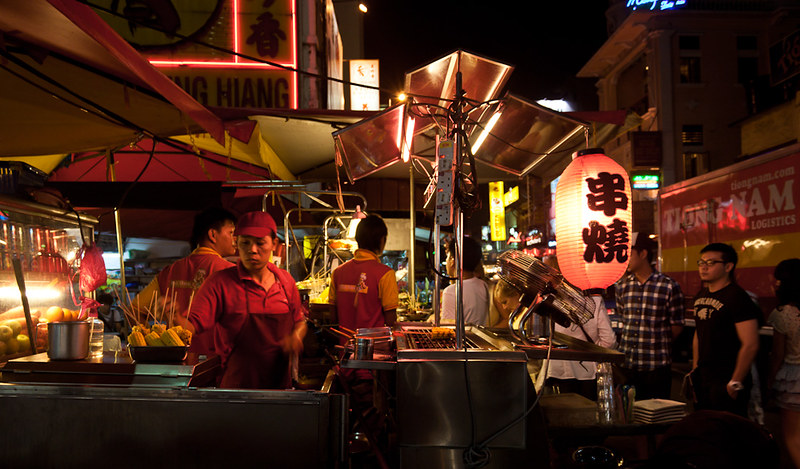

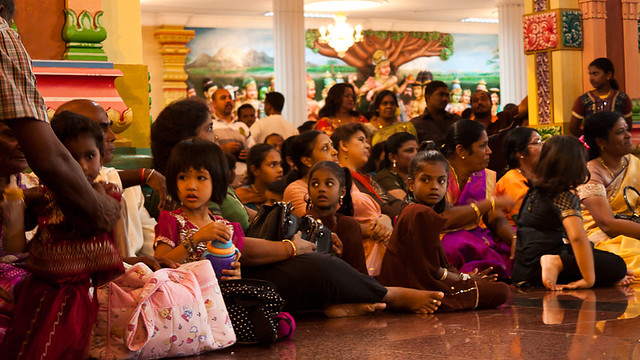

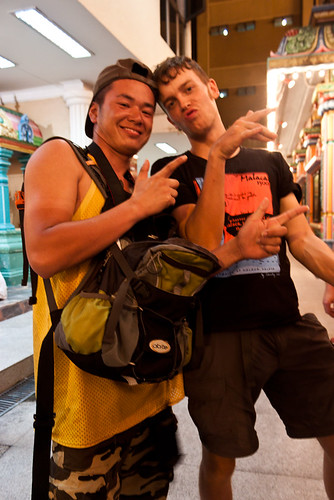

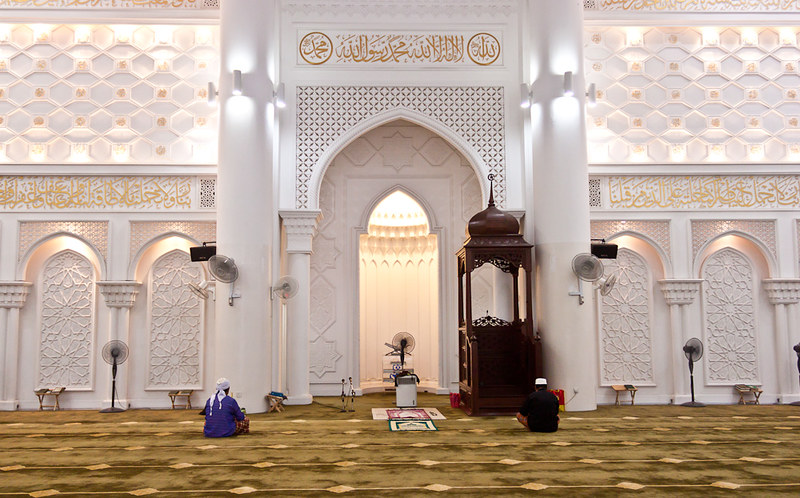
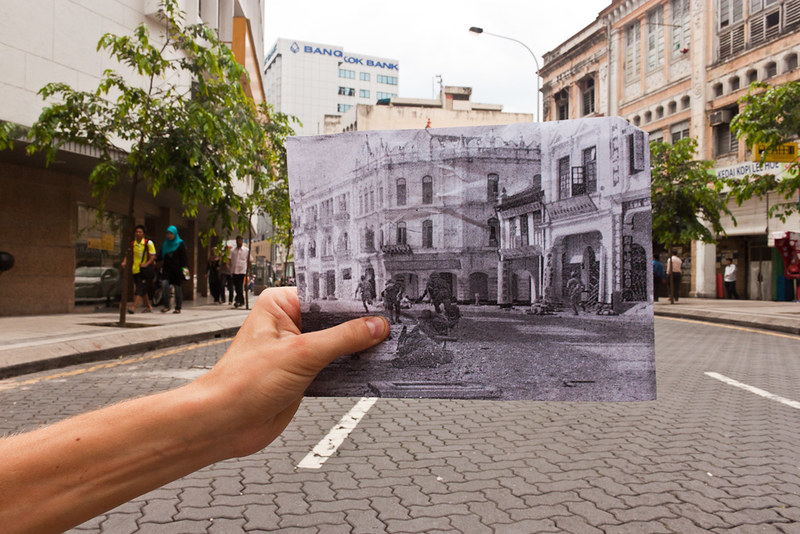
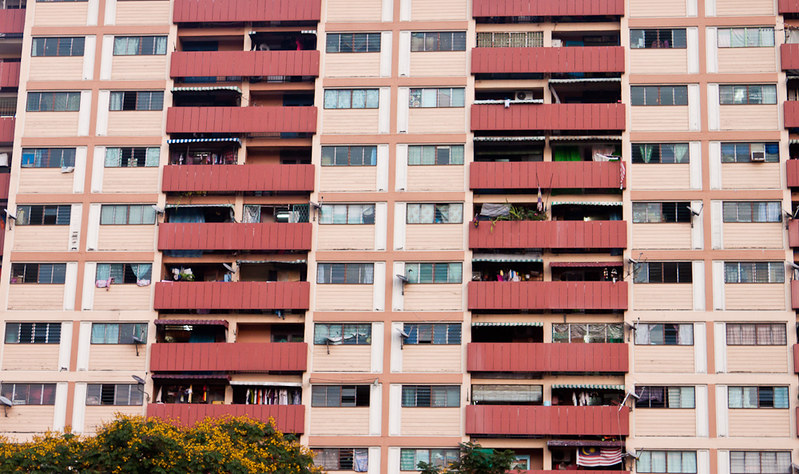
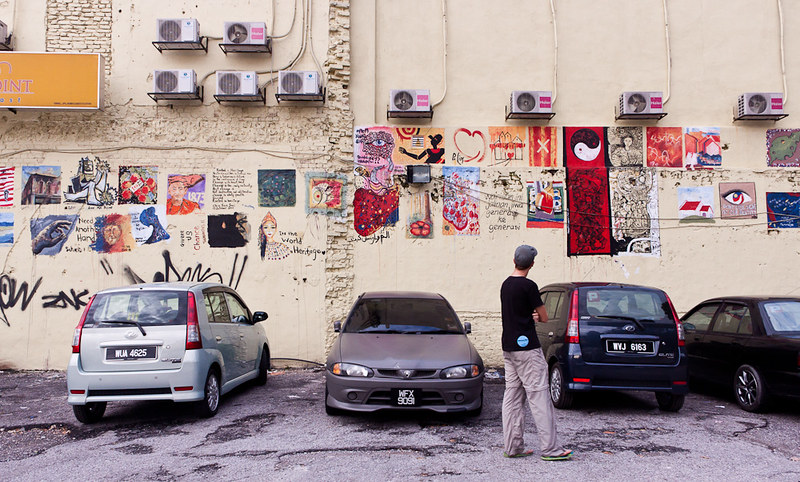
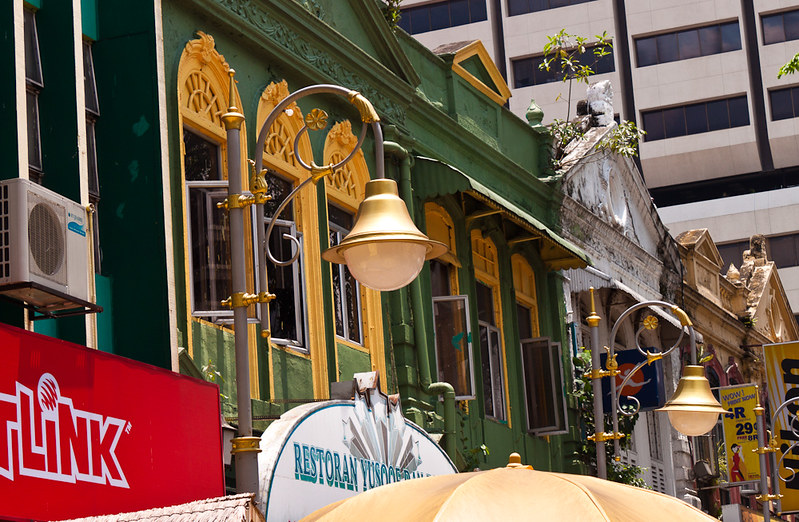
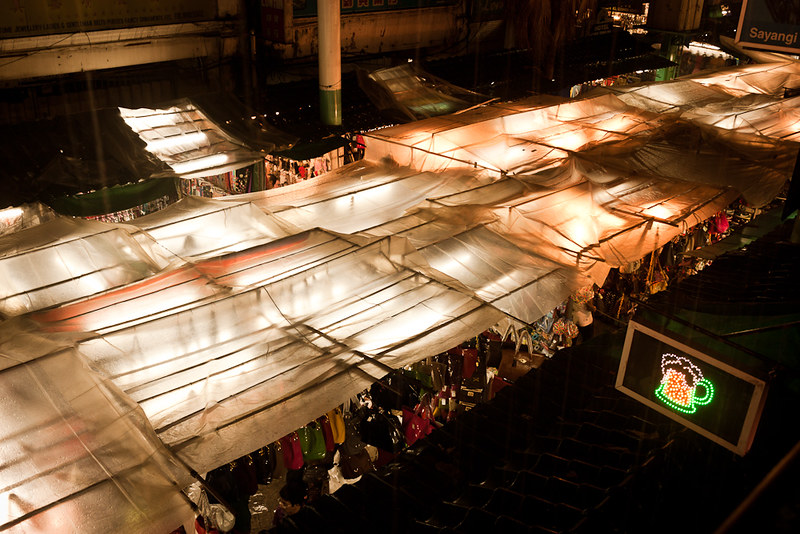

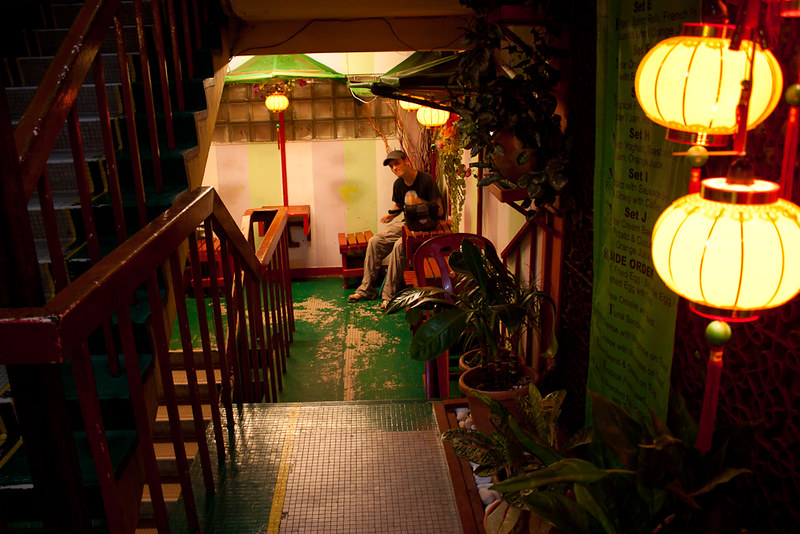
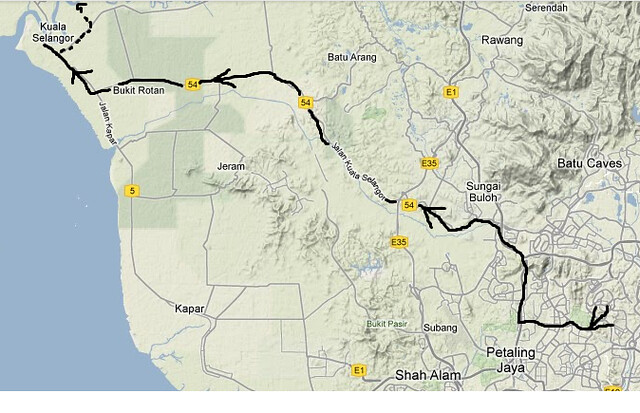



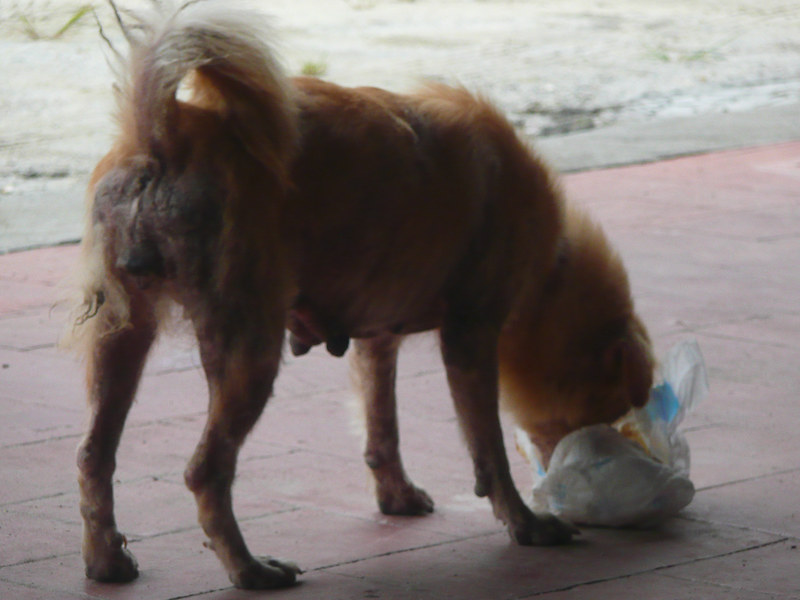

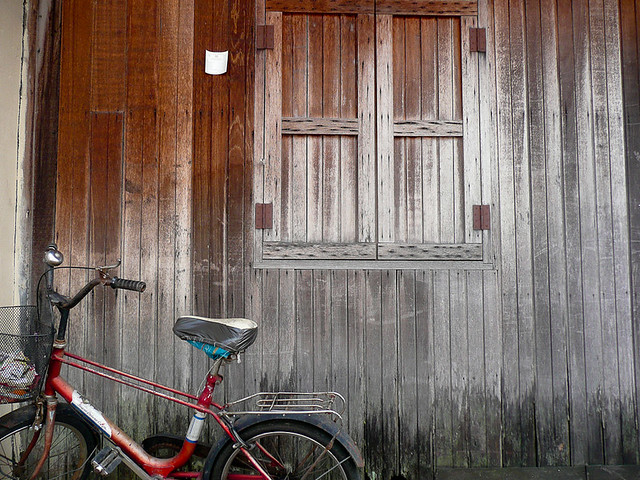



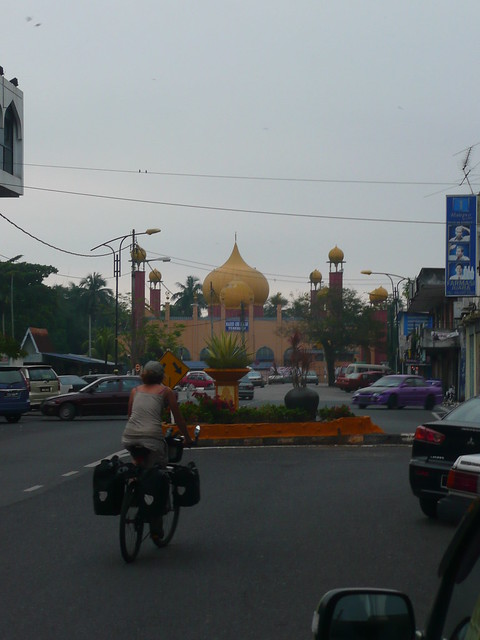
This is awesome!!! I just found your blog and love it! You know, in 5 months I start my Asia backpacking adventure for a year!!! We need to get in touch, I would love to get some tips, even meet up if you are in the same place as me!!
ReplyDeleteHey, where are you planning on going in Asia (apart from India and Nepal of course)? Be good to meet up somewhere along the way, we could get some pro photos done :)
DeleteYou still in Italy?
Amazing story as ever! Can't imagine how you cope half the time. The heat, the uphills, the wildlife, (bugs) the lowlife (feral dogs etc). Hope the downhills make it all worthwhile. A motto for this trip?
ReplyDelete